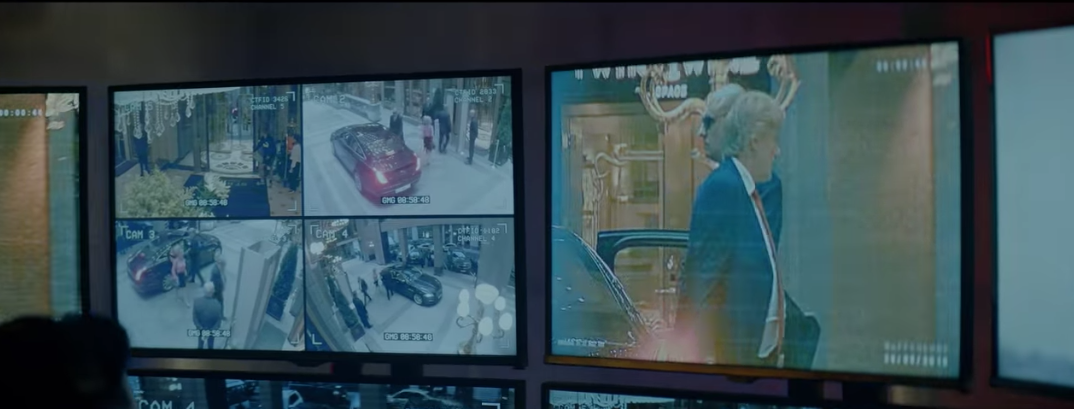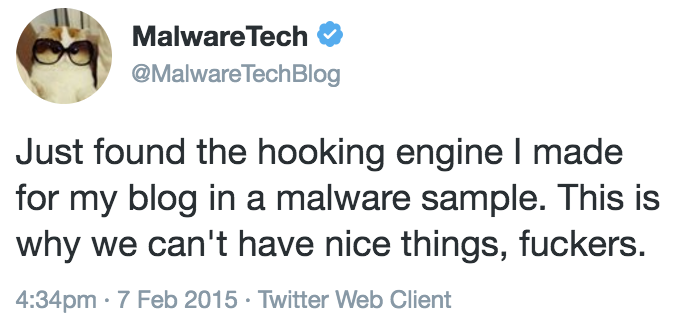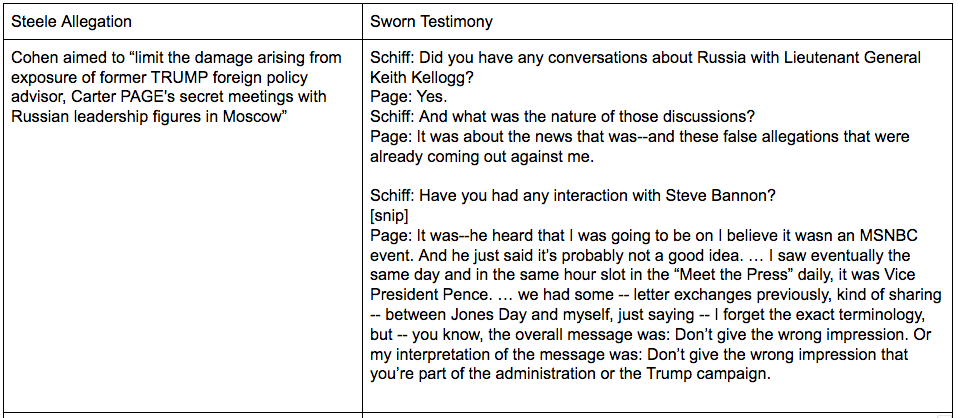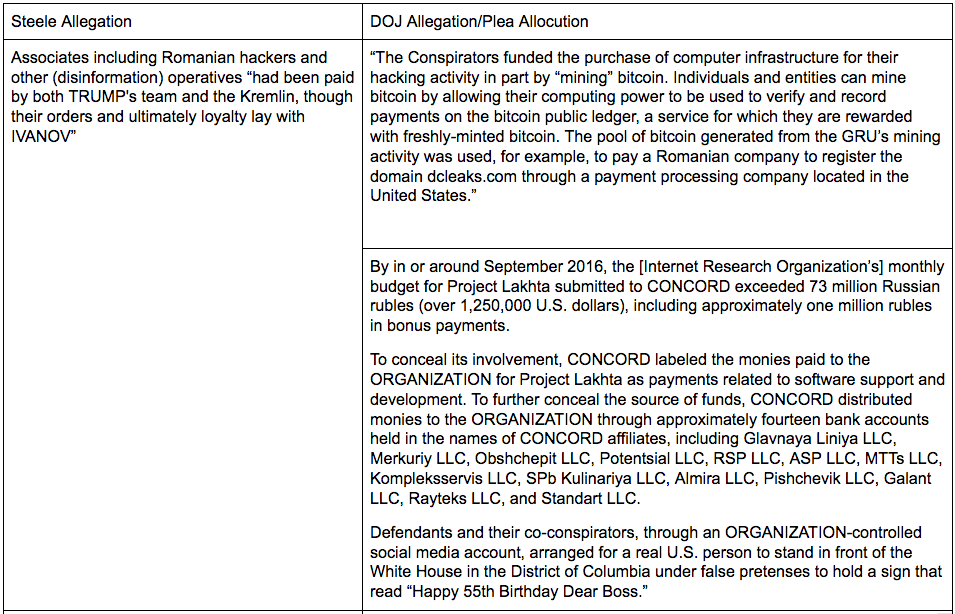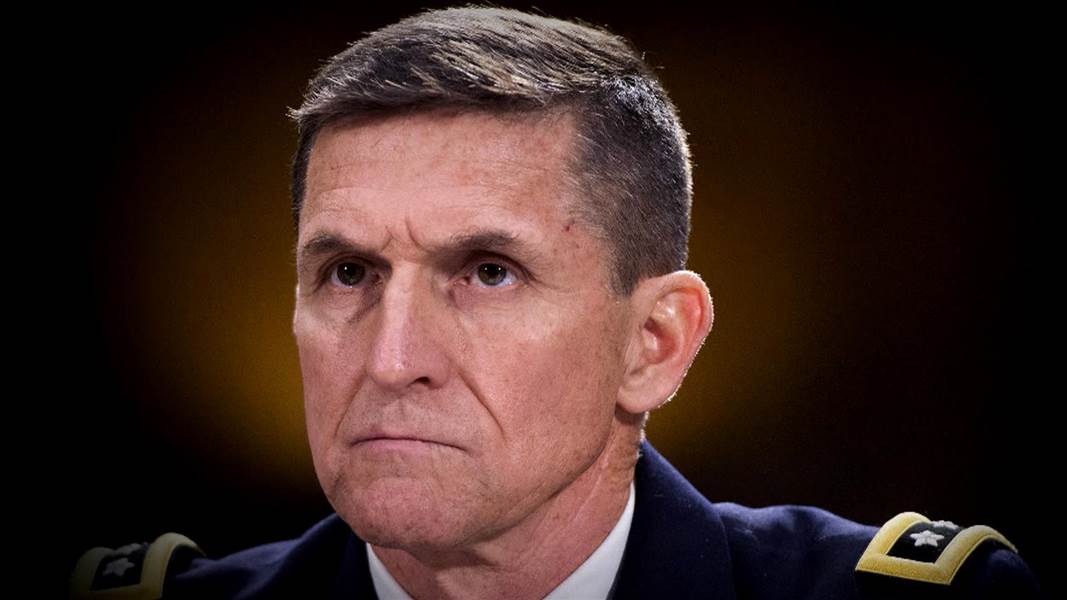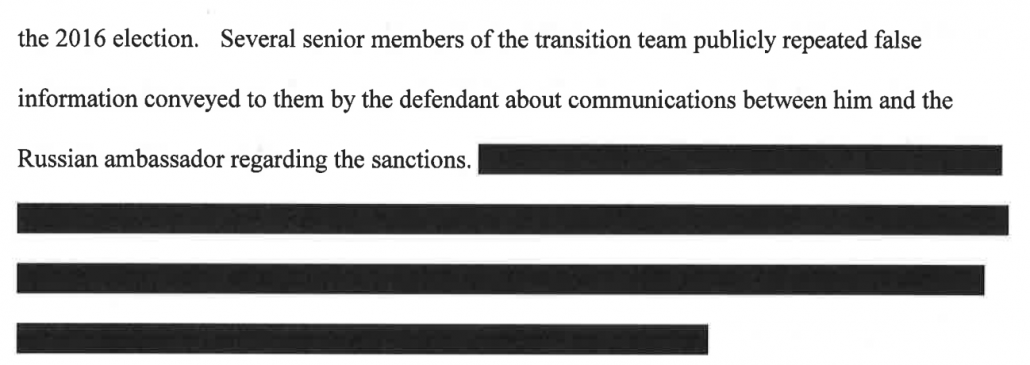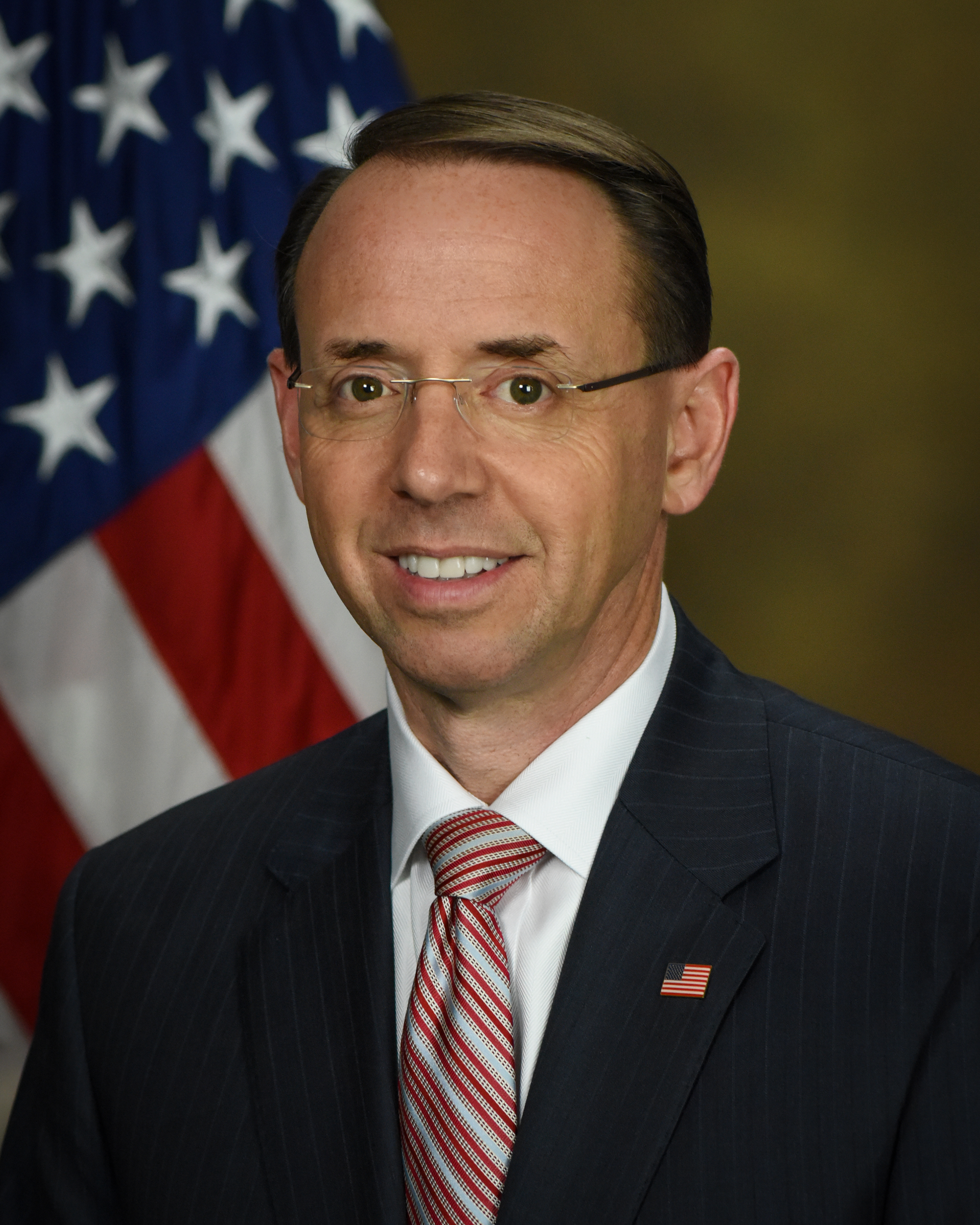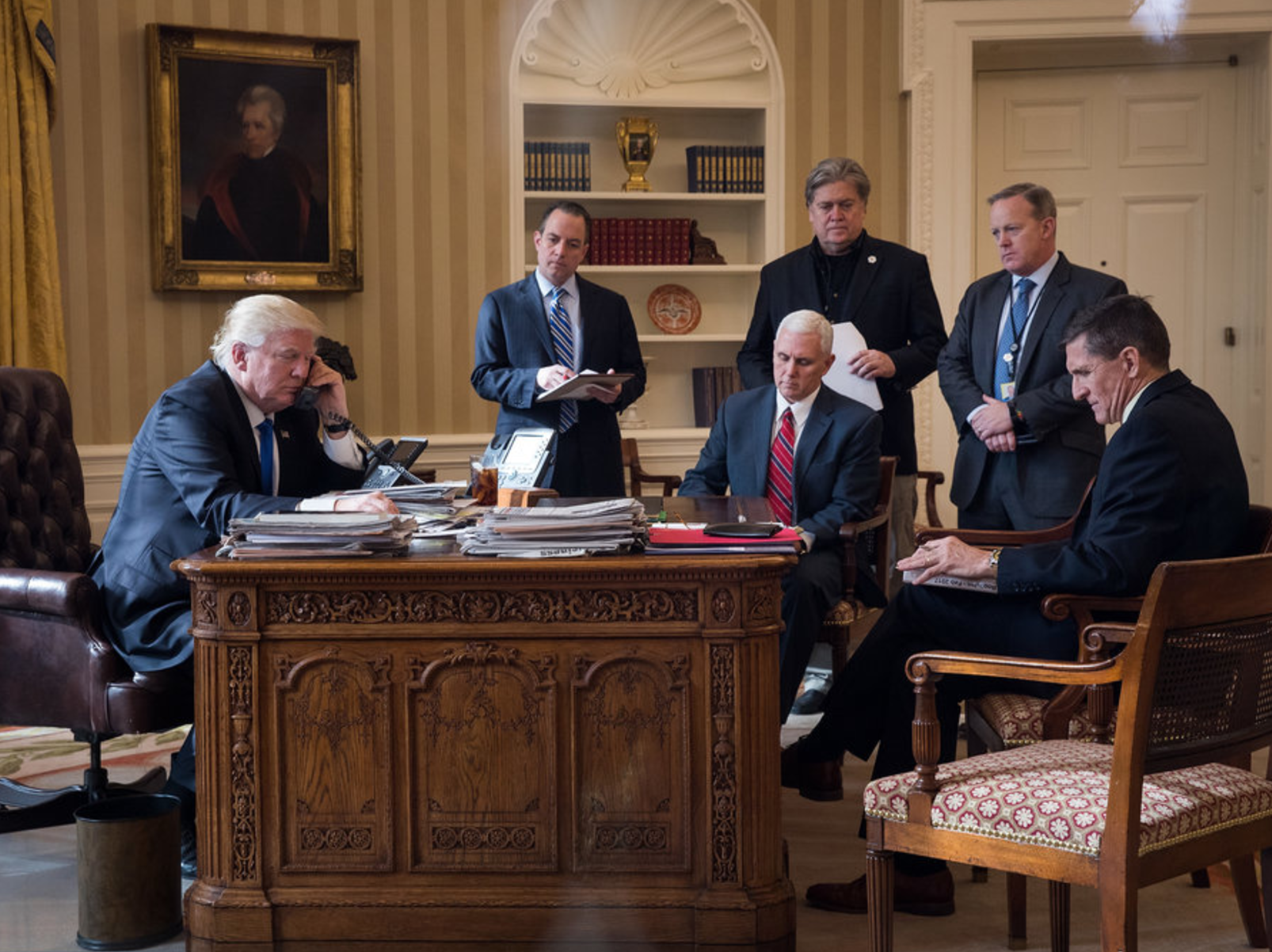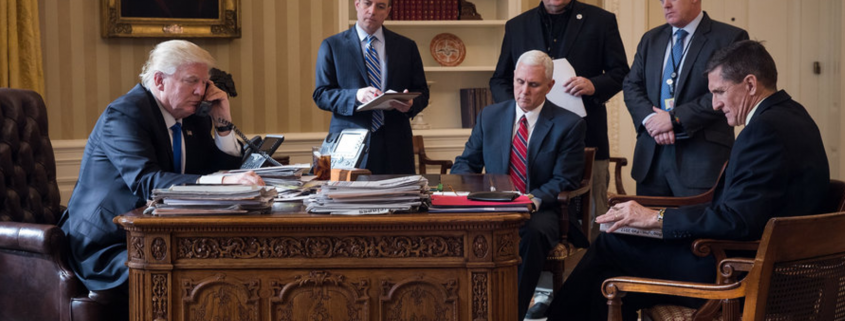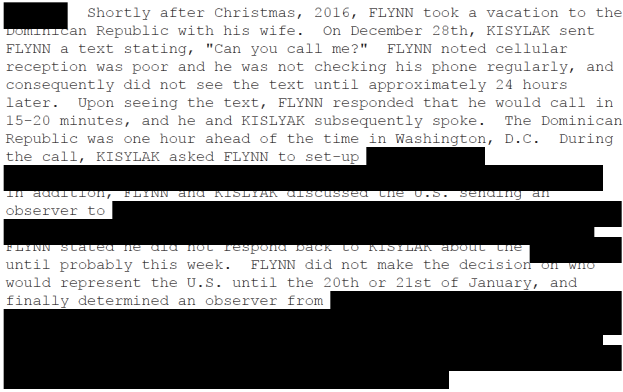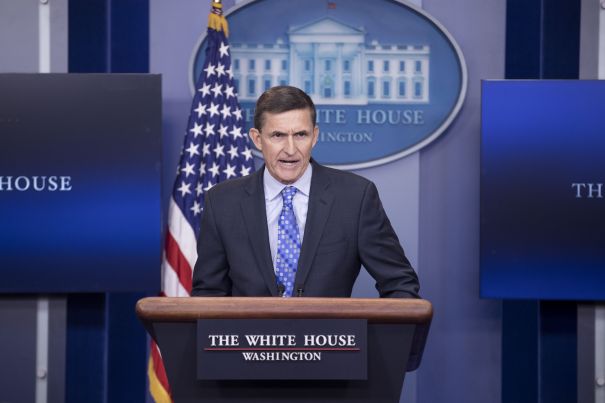On Narrating Donald Trump: “Shoot me like I’m shot on ‘The Apprentice'”
Pretty much everyone I know is recommending this New Yorker profile describing how Mark Burnett created Donald Trump’s current image (and with it his electoral prospects).
Along with describing how both Trump and Burnett came to turn the popularity of the show into a marketing vehicle and a Trump’s telling claim that he initially hesitated before signing onto reality teevee because the, “contractors, politicians, mobsters, and everyone else I have to deal with in my business … don’t like, as they’re talking to me, having cameras all over the room,” the piece describes how the show depicted not reality, but a heavily edited narrative trying to retroactively justify Trump’s capricious firing decisions each week.
The result created the illusion that a serially bankrupt joker was, instead, a king.
Burnett has often boasted that, for each televised hour of “The Apprentice,” his crews shot as many as three hundred hours of footage. The real alchemy of reality television is the editing—sifting through a compost heap of clips and piecing together an absorbing story. Jonathon Braun, an editor who started working with Burnett on “Survivor” and then worked on the first six seasons of “The Apprentice,” told me, “You don’t make anything up. But you accentuate things that you see as themes.” He readily conceded how distorting this process can be. Much of reality TV consists of reaction shots: one participant says something outrageous, and the camera cuts away to another participant rolling her eyes. Often, Braun said, editors lift an eye roll from an entirely different part of the conversation.
At the end of each episode, Trump determined which competitor should be “fired.” But, as Braun explained, Trump was frequently unprepared for these sessions, with little grasp of who had performed well. Sometimes a candidate distinguished herself during the contest only to get fired, on a whim, by Trump. When this happened, Braun said, the editors were often obliged to “reverse engineer” the episode, scouring hundreds of hours of footage to emphasize the few moments when the exemplary candidate might have slipped up, in an attempt to assemble an artificial version of history in which Trump’s shoot-from-the-hip decision made sense. During the making of “The Apprentice,” Burnett conceded that the stories were constructed in this way, saying, “We know each week who has been fired, and, therefore, you’re editing in reverse.” Braun noted that President Trump’s staff seems to have been similarly forced to learn the art of retroactive narrative construction, adding, “I find it strangely validating to hear that they’re doing the same thing in the White House.”
Such sleight of hand is the industry standard in reality television. But the entire premise of “The Apprentice” was also something of a con. When Trump and Burnett told the story of their partnership, both suggested that Trump was initially wary of committing to a TV show, because he was so busy running his flourishing real-estate empire. During a 2004 panel at the Museum of Television and Radio, in Los Angeles, Trump claimed that “every network” had tried to get him to do a reality show, but he wasn’t interested: “I don’t want to have cameras all over my office, dealing with contractors, politicians, mobsters, and everyone else I have to deal with in my business. You know, mobsters don’t like, as they’re talking to me, having cameras all over the room. It would play well on television, but it doesn’t play well with them.”
“The Apprentice” portrayed Trump not as a skeezy hustler who huddles with local mobsters but as a plutocrat with impeccable business instincts and unparalleled wealth—a titan who always seemed to be climbing out of helicopters or into limousines. “Most of us knew he was a fake,” Braun told me. “He had just gone through I don’t know how many bankruptcies. But we made him out to be the most important person in the world. It was like making the court jester the king.” Bill Pruitt, another producer, recalled, “We walked through the offices and saw chipped furniture. We saw a crumbling empire at every turn. Our job was to make it seem otherwise.”
[snip]
Trump took to his part more nimbly than anyone might have predicted. He wouldn’t read a script—he stumbled over the words and got the enunciation all wrong. But off the cuff he delivered the kind of zesty banter that is the lifeblood of reality television. He barked at one contestant, “Sam, you’re sort of a disaster. Don’t take offense, but everyone hates you.” Katherine Walker told me that producers often struggled to make Trump seem coherent, editing out garbled syntax and malapropisms. “We cleaned it up so that he was his best self,” she said, adding, “I’m sure Donald thinks that he was never edited.” [my emphasis]
Throughout, the piece both implicitly and explicitly suggests that the White House is adopting techniques from the show in burnishing Trump’s power. Or, at least, Trump is asking that his handlers replicate the same frames of power that Burnett used.
The show’s camera operators often shot Trump from low angles, as you would a basketball pro, or Mt. Rushmore. Trump loomed over the viewer, his face in a jowly glower, his hair darker than it is now, the metallic auburn of a new penny. (“Apprentice” employees were instructed not to fiddle with Trump’s hair, which he dyed and styled himself.) Trump’s entrances were choreographed for maximum impact, and often set to a moody accompaniment of synthesized drums and cymbals. The “boardroom”—a stage set where Trump determined which candidate should be fired—had the menacing gloom of a “Godfather” movie. In one scene, Trump ushered contestants through his rococo Trump Tower aerie, and said, “I show this apartment to very few people. Presidents. Kings.” In the tabloid ecosystem in which he had long languished, Trump was always Donald, or the Donald. On “The Apprentice,” he finally became Mr. Trump.
[snip]
Trump has succeeded in politics, in part, by borrowing the tropes of the show. Jonathon Braun pointed out to me that when Trump announced his candidacy, in 2015, he did so in the atrium of Trump Tower, and made his entrance by descending the gold-colored escalator—choreography that Burnett and his team had repeatedly used on the show. After Trump’s announcement, reports suggested that people who had filled the space and cheered during his speech had been hired to do so, like TV extras, for a day rate of fifty dollars. Earlier this year, the White House started issuing brief video monologues from the President that strongly evoke his appearances on Burnett’s show. Justin McConney, a former director of new media for the Trump Organization, told New York that, whenever Trump works with camera people, he instructs them, “Shoot me like I’m shot on ‘The Apprentice.’ ” [my emphasis]
One of the most interesting details in the piece is that Democrats actively (and successfully) lobbied musical talent to blow off Trump’s inauguration, themselves performing a kind of script-writing that has haunted Trump since.
A Democratic political operative who was involved in a back-channel campaign to dissuade big-name stars from appearing at the event told me that Burnett had tried to enlist musicians to perform. “Mark was somebody we were actively working against,” the operative said. Trump’s wish list included Elton John, Aretha Franklin, and Paul Anka—who, he hoped, would sing “My Way”—but they all claimed to be otherwise engaged. The event ended up with sparse crowds and a feeble roster of performers.
Because I dawdled before reading the piece, I was reading it at the same time as reading coverage of the shutdown. That coverage highlights the results of running a Reality Teevee star as President. There’s NYT report that the reason why Trump has shut down the government to get Congress to fund him a wall is because Sam Nunberg and Roger Stone (and Steve Bannon) used the wall as a mnemonic device to get Trump to repeat his lines.
“How do we get him to continue to talk about immigration?” Sam Nunberg, one of Mr. Trump’s early political advisers, recalled telling Roger J. Stone Jr., another adviser. “We’re going to get him to talk about he’s going to build a wall.”
[snip]
“As a messaging strategy, it was pretty successful,” [anti-immigration activist Mark] Krikorian said. “The problem is, you got elected; now what do you do? Having made it his signature issue, Trump handed the Democrats a weapon against him.”
We’ve shut down the entire government because an entertainment professional always refused to memorize his lines (or as someone on Twitter noted, use a teleprompter), and so the unstable hacks who managed him early on invented a policy promise that not even hardline anti-immigration experts want.
And Trump seems to be judging the advice on the shutdown he receives based on how sycophantically his interlocutors judge his “performance” trying to ratchet up pressure for a wall.
Trump spent much of Saturday on the phone with allies, talking through his positioning on the shutdown and hearing their reviews of his Rose Garden performance, according to a person close to him. Two people regularly on his call list — Rep. Mark Meadows (R-N.C.) and Sen. Lindsey O. Graham (R-S.C.) — have encouraged Trump to take a hard line and refuse to agree to reopen the government unless wall funding is secured, the person said.
Trump, who doesn’t understand the successful tycoon that starred in The Apprentice was the product of heavy editing, has now taken to editing himself, trying to fulfill the things the Campaign Reality Teevee star said over and over, based off what Mark Meadows and Lindsey Graham tell him.
The New Yorker profile, however, offers scant solutions to the problem that Burnett created — just his ex-wife imploring him to tell Trump he’s not actually living a reality show, as if that will fix the problem.
One day this past fall, Burnett got a call from his first wife, Kym Gold, with whom he remains friendly. Gold was upset about what was happening in the country, and asked Burnett to intervene with Trump. “We had it out,” she told me. “I said, ‘You’ve got to help our children, for the future and safety of this country.’ ” Gold implored Burnett, “Tell him this is not a reality show. This is real life. You’re the President. You’re saying things you cannot say—to reporters, to other world leaders.”
But that wouldn’t fix it even if Burnett were willing to risk losing access to Trump by telling him.
The problem, and any potential solutions, is something I’ve been thinking about for some time. No one is going to cure Trump of his addiction to being framed to look powerful. If he doesn’t get that high from his White House handlers, he will continue to fire them and look elsewhere, to people who are even better trained at flattery than Burnett. Trump now believes he can produce himself, based largely on the feedback of nutjobs like Ann Coulter and Sean Hannity.
I’m not actually advocating letting Trump frame himself as a king. But I also think that much of Democrats’ response involves trying to fact check Trump rather than reframe him. Your typical Trump voter isn’t going to give a damn that Trump is lying until some policy he has bragged about (up to and including the shutdown, but also his trade wars) ends up making them feel personally betrayed.
Mind you, I think Nancy Pelosi understands all this. She understands (like that other great female politician, Angela Merkel) that Trump will lose more if he is shown looking weak next to a woman than if someone proves his 100,000th lie.
That last of the self-imagined productive sycophants left with John Kelly. Trump now has a temporary Chief of Staff, one who will be gone once Trump decides to internalize Mick Mulvaney’s labeling of Trump’s position on the wall as “childish.” That creates a vacuum in the function of framing Trump’s image.
Update, January 12: This important op-ed from an OLC veteran describes how lawyers there do much the same as what editors on The Apprentice does.
But when I was at OLC, I saw again and again how the decision to trust the president failed the office’s attorneys, the Justice Department and the American people. The failure took different forms. Sometimes, we just wouldn’t look that closely at the claims the president was making about the state of the world. When we did look closely, we could give only nudges. For example, if I identified a claim by the president that was provably false, I would ask the White House to supply a fig leaf of supporting evidence. Or if the White House’s justification for taking an action reeked of unconstitutional animus, I would suggest a less pungent framing or better tailoring of the actions described in the order.
I often wondered, though, whether my attempts to remove the most basic inaccuracies from the face of a presidential order meant that I was myself failing to carry out my oath to protect and defend the Constitution. After all, the president had already submitted, through his early drafts or via Twitter, his reasons for issuing a particular order. I sometimes felt that, rather than engaging in professionally responsible advocacy, my OLC colleagues and I were using the law to legitimize lies.
I felt more than a twinge of recognition this month when reading a New Yorker article about Trump and the reality-TV show “The Apprentice.” Jonathan Braun, an editor on “The Apprentice,” described how editors would “reverse engineer” episodes after Trump made impulsive decisions about firing a contestant. The article described editors “scouring hundreds of hours of footage . . . in an attempt to assemble an artificial version of history in which Trump’s shoot-from-the-hip decision made sense.” Like a staff member at “The Apprentice,” I occasionally caught myself fashioning a pretext, building an alibi.

